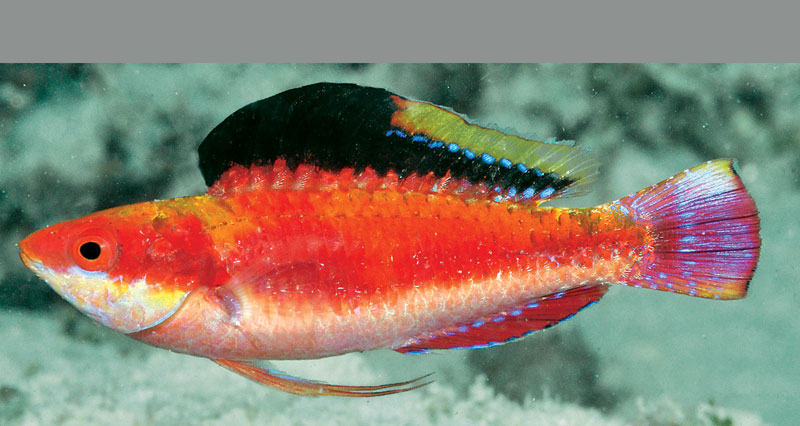Cirrhilabrus marinda is the newest species of fairy wrasse to be described, with the new fish being a very close offshoot of the common aquarium favorite, Cirrhilabrus condei. Marinda’s fairy wrasse looks very similar to Conde’s fairy wrasse with a nearly identical color pattern in both sexes, and the new C. marinda being distinguished primarily on the basis of the shape and coloration of the male’s dorsal fin.

Genetically, Cirrhilabrus marinda is the same as C. condei and like Pseudojuloides edwardi, the researchers assign the rate of “phenotypic divergence outpacing changes in mitochondrial genotype”. This type of change in physical appearance before the genetic makeup is expected in the early stages of fish speciation, especially where the male nuptial display and coloration is concerned.

The primary noticeable difference between Cirrhilabrus marinda and C. condei is the presence of a mostly black dorsal fin in male C. marinda which is also much taller than in typical specimens of C. condei. The apparent reason for the beginnings of this new species divergence is a difference in habitat preference with Conde’s fairy wrasse preferring inshore reef habitats while Marinda’s fairy wrasse prefers deeper and more offshore habitats.

Both C. marinda and C. condei can be found living from Eastern Indonesia to Vanuatu but as far as we know they are not known to co-occur in the same habitats. Ironically enough, during our excursion to the Solomon Islands we collected “Blackfin Condei Wrasses” before this paper was published, precisely where you would expect to find the newly described Cirrhilabrus marinda.
The next time we are in the field and see a slightly different variant of a Cirrhilabrus or a Paracheilinus wrasse we will definitely take note and try to bring back some specimen samples. The newly inducted species of Cirrhilabrus is described by Allen, Erdmann & Ailami in the Journal of the Ocean Science Foundation.



